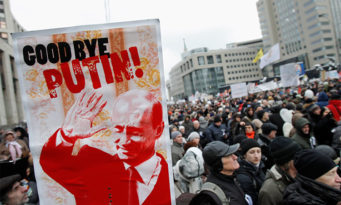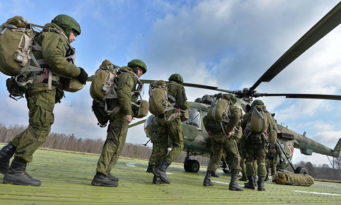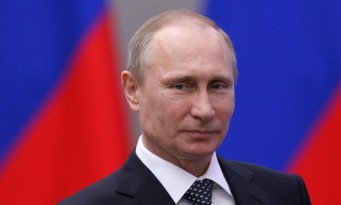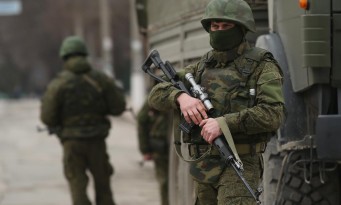The competition for Artificial Intelligence (AI)

- By Octavian Manea
“The Third Offset posits that advanced computing, big data, machine learning and artificial intelligence (AI) are pointing towards more powerful battle networks involving human-machine collaboration and combat teaming.”
The United States has a long historical record, especially during the Cold War, in developing ofsset strategies, investing in niche comparative advantages to outcompete the other side. Today the same logic is captured by two core documents developed under the Trump Administration – National Security Strategy (NSS) and National Defense Strategy (NDS) – that are listing the key features of the emerging security environment, one where there is a return of the great power competition and in which the American Way of War is increasingly contested. A few months ago, we’ve discussed with Robert Work, a former Deputy Secretary of Defense during the Obama Administration about the technologies and organizational constructs (AI-powerd weapons systems and human-machines cross-domain collaboration) that are driving the third offset strategy (3OS). In the end, he emphasized that “the whole idea of the 3OS is to restore our conventional overmatch, so deterrence is strengthened, and the chance of confrontation lowered.”
by Octavian Manea
An expanded version of this interview was first published in the Small Wars Journal.
What is the structural reality that triggers and makes the search for a new offset strategy an imperative?
The United States adopted the 1OS when it enjoyed nuclear superiority. It was a key part of the “New Look” and “New, New Look” Strategies adopted by the Eisenhower Administration, which relied upon the threat of massive retaliation at the strategic level and early use of tactical nuclear weapons during conventional confrontations. Once the Soviet Union achieved strategic and tactical nuclear parity, however, the threat of tactical nuclear weapons was no longer credible. U.S. strategists believed this made the likelihood of conventional war in Europe greater, which spurred the 2OS.
Similar thinking animates the Third Offset Strategy. Both Russia and China were alarmed by the ease in which the U.S. defeated Iraq in the First Gulf War, and both made it their business to seek rough parity in battle network-guided munitions warfare. Both have now achieved that goal, if only in their “near abroads,” where they have assembled very powerful “anti-access, area-denial” (A2/AD) networks designed to deter, disrupt and defeat U.S. power projection operations near their home territories. If they choose to do so, these same A2/AD networks provide an umbrella under which they can project power to coerce their neighbors or threaten U.S. allies. As Lacey suggests, this shift towards conventional parity makes the likelihood of military confrontation between state powers higher.
With this in mind, the 3OS seeks to reestablish U.S. conventional overmatch, thereby strengthening both conventional deterrence and strategic stability. With regard to the latter, as a status quo power, the 3OS fits within a framework of comprehensive strategic stability, which consists of three supporting legs: strategic deterrence, conventional deterrence, and the day-to-day competition below the threshold of armed conflict. All work together to provide comprehensive strategic stability. Our concept of strategic deterrence rests upon the assumption of strategic parity and “mutually assured destruction.” In contrast we do not consider conventional parity to be a good thing. We much prefer having clear conventional overmatch, which is generally thought to be the best way to deter would be aggressors from resorting to conventional warfare below the nuclear threshold. The 3OS is a response to a new condition of parity in battle network-guided munitions warfare, which undermines both conventional deterrence and comprehensive strategic stability.
Let’s describe the broader strategic context in which the 3OS is developing. What is the operational problem 3OS is trying to address?
Offsets inevitably cause adversaries and competitors to react. The Soviets clearly reacted to the 1OS, seeking both strategic parity and conventional dominance. Once they achieved their goals, the U.S. was forced to purse the 2OS, which in turn spurred a Chinese and Russian reaction to perceived U.S. conventional dominance.
Russian and Chinese adopted 2OS thinking and technologies to erect A2/AD (anti-access/area-denial) networks to confront our own battle networks. They do so to deter, forestall and disrupt any U.S. power projection operation near their own territory. But, as we discussed earlier, the networks also provide both with an umbrella under which they could coerce neighboring states or threaten U.S. allies.
The appearance of conventional A2/AD battle networks capable of directing guided munitions salvos as deep and as dense as our own threatens our ability to project power. This is a serious operational problem, and a direct challenge to a global superpower that relies on its ability to project power into distant theaters to underwrite both its alliances and conventional deterrence. The whole idea of the 3OS is to restore our conventional overmatch, so deterrence is strengthened, and the chance of confrontation lowered.
The character of war has changed over time. The character of offset has changed over time. In the past we had the Assault Breaker and Air-Land battle doctrine. Today the emphasis seems to be on Raid Breaker and Multi-Domain battle. How would you describe the contours of the operational concepts and organizational constructs of the 3OS?
The Third Offset posits that advanced computing, big data, machine learning and artificial intelligence (AI)—and the vastly improved autonomous systems and operations they will enable—are pointing towards new and more powerful battle networks involving human-machine collaboration and combat teaming.
The development of supporting 3OS operational concepts and organizational constructs is in its very early stages and is proceeding along two complementary paths. The first is a technical path, which is exploring how we can improve the performance of our current battle networks by exploiting AI and the greater autonomous operations it allows. This technical path includes:
1) Injecting machine-learning algorithms throughout our sensor, C3I, effects and regeneration/sustainment grids, to improve performance in all battle network operations. These algorithms will help us more rapidly discern battlefield patterns, develop and share more accurate and timely common operational pictures, achieve more precise and discriminate combat effects, and provide needed logistics and maintenance support on demand.
2) Pursuing new means of human-machine collaboration—exploiting what machines and humans do best to make more timely and relevant battlefield decisions. In most instances, we intend to keep humans either in the loop or on the loop, but we will increasingly use machines to help humans make more relevant and timely decisions. However, in some instances we will delegate decision-making authority to machines, such as in cyber defense, electronic warfare, and missile defense.
3) Improving human-assisted operations—connecting every combat commander and operator to the power of the battle network when and where needed. In the 2OS, the power of the battle-network was generally exploited by the brigade level or above. Over the last 16 years of war, information has been pushed further down the chain of command; we now see platoons and companies getting as much information as battalions and brigades used to receive. The 3OS sees battle network information getting down to individual or squad leader level.
4) Adopting new forms of human-machine combat teaming—the combination of manned and unmanned platforms in innovative ways. Operators are experimenting with manned-unmanned operations in every domain, with applications in the air domain leading the charge.
5) And fielding cyber and EW-hardened, network-enabled autonomous, and high-speed weaponry. Future autonomous weapons will collaborate during their attacks, taking into account an enemy’s defenses as well as the actions of friendly attackers. And hypersonic and directed energy weapons will be used to achieve more timely effects.
If you think of a matrix with a vertical axis consisting of the four battle network grids and a horizontal axis consisting of these 5 technological improvements, you begin to see how 3OS technologies point toward a new type of joint battle networks with increased levels of autonomy and human-machine collaboration. If the 2OS was about looking deep, shooting deep and hitting deep, the 3OS is about understanding the battlespace, planning, and achieving more discriminate effects faster than your opponent. If we fulfill this promise, we should gain a decisive competitive advantage.
The second supporting path of current 3OS efforts is to develop new technology-enabled operational and organizational constructs that give us an advantage at the operational level of war. One emerging operational concept is Raid Breaker. As we just discussed, in unguided weapons warfare most munitions miss their targets. It therefore relies on mass of fire to achieve target effects. In contrast, guided munitions warfare seeks only to saturate the defense, since any single leaker can achieve target effects. This puts an enormous burden on the defense. In a situation where both sides enjoy rough guided munitions-battle network parity, the side that has a marked advantage in point defense gains an enormous, potentially decisive advantage over the course of a campaign.
Raid Breaker is a concept that combines new autonomous sensors, new autonomous C3I capabilities and especially new high-speed effectors such as gun-launched hypersonic projectiles to force an attacker to fire increasingly dense—and expensive—guided munitions salvos to saturate a defense. Of course, for this concept to work, the cost per defensive shot must be significantly lower than the cost per offensive shot. Right now, defensive interceptors are much more expensive than offensive munitions. In essence, then, Raid Breaker is exploring how we might be able to win the guided munitions salvo competition at a price we can afford.
Another emerging concept is Multi-Domain Battle. For the past 25 years, in confrontations against regional competitors, the Joint Force could count on superiority in every operational domain—space, air, sea, undersea, land and cyberspace. Now, faced by great powers with rough parity in battle network-guided munitions warfare, the Joint Force will be contested in every domain. Multi-Domain Battle seeks to achieve an advantage in this context by exploiting the aforementioned infusion of artificial intelligence (AI) and machine learning into our battle networks to achieve what I’ll call “cross-domain superiority.” If successful, even if the enemy can contest us in a single domain we should to be able to achieve physical, temporal and positional advantages by combining simultaneous operations in and fires from multiple domains—by massing effects from the air, from the sea, from the ground, from under the sea.
One thing I need to mention here is that neither of these two paths is likely to give us a lasting operational advantage like the ones we accrued after the 1OS and 2OS. Advances in 3OS technologies such as AI, big data and machine learning are being driven by the commercial sector and available to all competitors. The competitive landscape will thus have many “fast followers.” 3OS thinking sees us in an intense temporal competition where we need to strive to be the “fast leader.” Even then, we must be prepared for technical, tactical and operational surprise as some competitors beat us to the punch. That is why you hear so much emphasis in the Department about the need to become more agile, flexible and resilient.
You emphasize that AI and autonomy are at the core of the 3OS battle networks. In 2015, Retired General Stanley McChrystal published a great book (Team of Teams: New Rules of Engagement for a Complex World ) where he described the JSOC network responsible for neutralizing Zarqawi - a “team of teams” effect, in fact an information age construct able to fuse resources and capacities from across the network, highly autonomous with the decision-making cycle decentralized pushed way down, able to access a common shared consciousness in order to achieve a strategic battlefield effect. Is this description applicable also to the human-machine operations contemplated by the 3OS?
Thank you for asking this question. A lot of people look at the 3OS and think that it is all about technology and high-end warfare. In fact, 3OS thinking was inspired from the beginning by the Gen. McChrystal’s thinking. Tony Thomas gave us a picture that was drawn on a white board by a Special Forces operator in early 2000s. It depicts a tactical battle network that transfers data from space systems, manned aerial platforms, unmanned aerial platforms, ELINT, SIGINT, HUMINT, and ground systems directly to an operator, labeled Yankee 01 in the picture, who is ready to conduct an operation against a high value target. This picture was the inspiration for assisted human operations, which is all about rapid, decentralized decision-making, supported by the power of the battle network. The picture also well portrays a 3OS human-machine collaborative battle network with a high degree of human-machine combat teaming where decision-making authority is sometimes delegated to machines, and where the ultimate aim is the development of the “common shared consciousness” which was the secret sauce of General McChrystal’s team of teams.
This type of thinking and aim is as applicable to high-end warfare as it is to counterterrorist operations. The only difference between the two is their associated battle networks will be configured differently for the task at hand. In other words, while each battle network will incorporate AI and machine learning, human-machine collaboration, assisted human operations, human-machine combat teaming, and cyber and EW hardened network-enabled weapons, they will use them in different ways to support specific aims, operations and tactics. The operational and organizational constructs that will evolve from 3OS will all have similar traits where commanders and operators alike are trying to pull and exploit information and resources from across the network, develop a common shared consciousness, and exploit highly decentralized and in some cases autonomous decision-making cycles. Only the battle network’s grid configurations will differ, depending on the level of war or task at hand.
In the past, the 2OS had a transformative effect on NATO’s deterrence posture. Today NATO is not well positioned to counterbalance 2OS theater-level battle networks. How do you see the effect of the 3OS thinking on influencing NATO's adaptation in an age of great power competition?
It’s too early to tell. I think NATO is still debating whether Russia poses more of a conventional threat or more of a hybrid threat that seeks to destabilize the alliance through what I think of as governance and societal cohesion attacks. Additionally, as of yet there are no 3OS concepts like FOFA that might help transform NATO’s operational posture.
I think this will change in the near future. In my view, a NATO Collaborative Human-Machine Battle Network designed for counter-power projection would strengthen conventional deterrence along the eastern NATO/EU border in a big way. Such a battle network would employ a variety of unmanned sensors and effectors to preclude the need for large formations on the eastern border. This battle network would include and control a NATO Operational Fires Network with common artillery, rocket and INF compliant ballistic missiles, augmented by distributed “containerized armories.” Such a network could mass extremely dense and accurate guided missile and air fires across a much greater front than seen in the 2OS. “Containerized armories” would also allow smaller nations that cannot afford to raise and maintain combined arms formations to make a material contribution to NATO’s defense.
I think this discussions highlights an important point. The 3OS is very “coalition friendly.” AI-enabled C3I grids with computer vision and natural language processing should allow more cohesive coalition command and control and operations. Distributed “containerized armories” filled with network-enabled anti-armor weapons will allow any nation to make itself a tough nut to crack. And even a small nation with skills in algorithmic warfare can be a critical contributor to a NATO Human-Machine Collaborative Battle Network. For this reason, ultimately I expect the 3OS to have an even greater transformative impact on NATO posture than did the 2OS.
Do you have any other thoughts that we have not yet covered?
Only one. Some people are worried about AI machines that will be able to reason in many ways like humans, and about delegating decisions about life or death to them. The 3OS exploits AI and autonomy, but it generally sees humans remaining either in the loop or on the loop—as is suggested by the terms human-machine collaboration and human-machine combat teaming. In our current thinking the human always comes first.
Accordingly, the envisioned road to the 3OS starts with the insertion of “narrow AI”—algorithms developed for a specific purpose—into our battle network grids. We posit that once we infuse all four of our grids with multiple narrow AI systems, the battle network will achieve what Gen McCrystal refers to as common shared consciousness. If we can actually do this, when an adversary’s legacy battle network comes up against ours, it may appear as though our battle network is operating under “general AI,” or AI that mimics human thought and intuition. But but humans will still control and guide the battle network.
Now, that said, our competitors may go a different way. Russian and Chinese militaries, which support autocratic regimes, may be less worried about delegating lethal decision making authority to machines. We know, for example, that the Soviets conceived of reconnaissance strike complexes that would ultimately be nearly wholly automatic, where machines made all the decisions about target engagement.
So the way democratic militaries think about 3OS networks may be different than the way our autocratic geopolitical rivals think about them. We have to see how this competition evolves over time. What will happen in a confrontation between 3OS battle networks where one is controlled mainly by humans and the other controlled mainly by machines? Which side will prevail? I’m afraid we will see.
Robert Work is a Distinguished Senior Fellow for Defense and National Security at the Center for a New American Security (CNAS) and Senior Counselor with Telemus Group, a consulting firm specializing in defense forecasting, wargaming and qualitative analysis. He served as the 31st Deputy Secretary of Defense from 2014-2017.

















